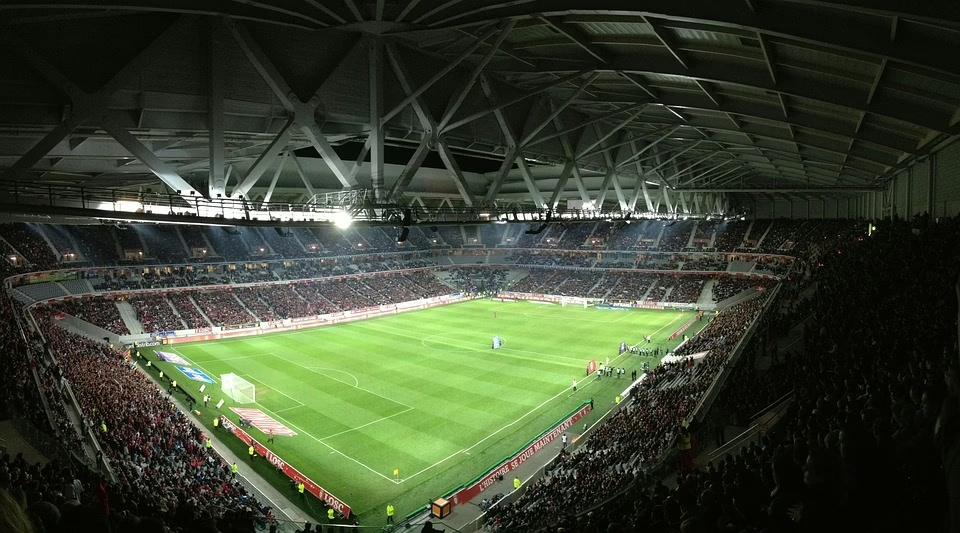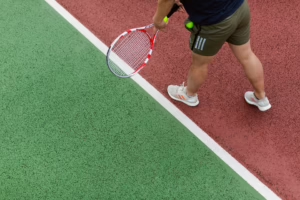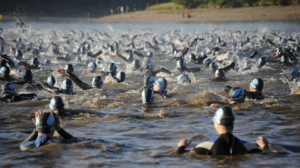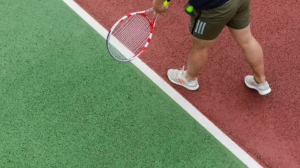Acrobatics and Technology: How VR and Innovation are Changing the Game
Introduction
Acrobatics is a captivating art form that combines strength, agility, and creativity. As audiences increasingly demand more dynamic and immersive experiences, the intersection of acrobatics and technology has become a hotbed of innovation. Virtual Reality (VR) and other technological advancements are not only changing the way acrobatic performances are conceived, created, and experienced but are also reimagining training methodologies and audience engagement.
This article explores how innovations in technology are transforming the world of acrobatics, focusing on the integration of VR, motion capture, and other cutting-edge tools.
The Evolution of Acrobatics
Traditional Acrobatics: A Brief Overview
Acrobatics has roots that trace back thousands of years, with evidence of its practice found in ancient cultures such as China, Egypt, and Greece. Traditionally, acrobatics involves various forms of challenging physical feats, including tumbling, balancing, and aerial movements. The art form has evolved through the ages, from circus performances to contemporary dance and athletic competitions.
The Rise of Technology in Acrobatics
With the dawn of the digital age, technology has begun to play a significant role in reshaping artistic disciplines, including acrobatics. The rise of digital media, interactive platforms, and communication tools has given acrobatic artists new avenues for creativity and expression. Moreover, technological advancements have provided enhanced training methods, safety measures, and audience interaction.
Virtual Reality: A Game Changer
Defining Virtual Reality in Acrobatics
Virtual Reality is a computer-generated simulation that immerses users in a three-dimensional environment. Through specialized hardware, such as VR headsets, users can interact with the virtual world as if they were physically present in it. In the realm of acrobatics, VR offers exciting opportunities for both performers and audiences.
Enhancing Training with VR
Training is a critical aspect of acrobatics, requiring immense physical conditioning and mastery of complex movements. VR has emerged as a powerful tool for training acrobats, allowing them to practice and refine their skills in simulated environments. Several aspects of training can be enhanced through VR:
-
Safe Environment for Practice: Before executing risky maneuvers, performers can simulate challenging routines in a controlled virtual space. This allows for better understanding and memorization of sequences without the physical risks associated with actual practice.
-
Detailed Feedback Mechanisms: VR can provide real-time feedback on posture, angles, and movement precision. This data-driven approach helps artists identify areas needing improvement, leading to enhanced performance quality.
-
Accessibility: VR training modules can democratize acrobatic education. Aspiring acrobats worldwide can access online VR programs and learn from renowned professionals, thus increasing the pool of talent in the field.
VR Performance Experiences
Acrobatic performances have traditionally been confined to physical spaces, limiting the reach of artists. However, VR is breaking down these barriers by enabling immersive performances that can be experienced remotely.
-
Virtual Shows: Artists can create stunning VR performances that audiences can attend from their homes. These performances can include interactive features, allowing viewers to explore different angles and perspectives of the action.
-
Creating New Narratives: The combination of acrobatics with VR storytelling techniques allows choreographers to weave intricate narratives that complement the physical performances. With a limitless virtual environment, artists can create worlds where the laws of gravity and physics may not apply.
-
Audience Engagement: VR experiences can transcend traditional audience engagement. Viewers can become part of the performance, interacting with the environment and even influencing the outcome of the show. This level of interactivity is unprecedented in traditional forms of acrobatics.
Motion Capture Technology
Understanding Motion Capture in Acrobatics
Motion capture technology involves tracking the movements of an individual and translating those movements into a digital format. This technology has wide applications in film, gaming, and now acrobatics.
Revolutionizing Training and Performance
-
Precision Analysis: By employing motion capture, acrobatic performers can analyze their movements with unparalleled precision. The technology provides detailed data on speed, angle, and force, enabling acrobats to refine their techniques systematically.
-
Virtual Coaches: Some programs utilize motion capture data to create virtual coaching experiences. By inputting their movements into a software program, acrobats can receive tailored training and coaching advice.
-
Enhanced Choreography: Choreographers can use motion capture to create intricate sequences that blend physical performance with digital elements. This technology allows for explorations in movement creativity that were previously inconceivable.
Collaboration Between Dancers and Technology
The collaboration between dancers and technologists has given rise to innovative performances that blend acrobatics with digital artistry. For instance, artists can project dynamic visuals that respond in real-time to their movements, creating an integrated performance that engages multiple senses.
Augmented Reality: The New Frontier
The Basic Concept of Augmented Reality (AR)
Augmented Reality integrates digital content with the real world, enhancing our perception of our environment. In acrobatics, AR can enrich the viewer’s experience through layered visual elements.
Enhancing Live Performances with AR
-
Visual Enhancements: Performers can use AR to add virtual elements to their acts. For example, a performer executing a complex routine could be surrounded by visually striking graphics that enhance the storytelling aspect.
-
Interactive Educational Tools: For training purposes, AR can overlay guiding visuals on top of an acrobat’s movements, helping them understand form and technique better. This technology can be used in workshops and training sessions, making learning more engaging.
-
Audience Participation: Through AR, audiences can interact with the performance in real time. For example, they could use their devices to bring additional elements into the scene, transforming the performance into a participatory experience.
Safety Innovations in Acrobatics
The Role of Technology in Ensuring Safety
Safety is a paramount concern in acrobatics due to the inherent risks involved. Technology is playing a crucial role in enhancing safety measures during training and performances.
-
Smart Wearables: Devices equipped with sensors can monitor an acrobat’s physical state and environment. For example, they can detect falls or unsafe positions, alerting performers and coaches instantly.
-
AI-Driven Risk Assessment: Advanced algorithms can analyze training patterns and performance data, assessing risks associated with specific maneuvers. This capability allows professionals to tailor training regimens that prioritize safety.
-
Impact-Absorbing Equipment: Innovations in materials science have led to the development of equipment designed to absorb impact during falls or crashes, reducing the likelihood of injury.
The Future of Acrobatics and Technology
Expanding the Horizons of Performance
As technology continues to evolve, the possibilities for acrobatics are expanding. The integration of additional technologies such as Artificial Intelligence (AI), robotics, and real-time data analytics holds promise for the next generation of acrobatic performances.
-
AI Choreography: Algorithms could assist choreographers in developing routines, suggesting movements based on an artist’s capabilities and style.
-
Robotic Assistance: With advancements in robotics, robots may assist acrobats in practice, enabling them to explore new movements without the inherent risks.
-
Global Collaboration: Technology tears down geographical barriers, enabling collaborations between acrobats worldwide. Virtual platforms can host international performances, workshops, and masterclasses.
Changing the Perception of Acrobatics
The continued integration of technology into acrobatics is reshaping how this art form is perceived. As performances become more technologically sophisticated, they may attract a wider audience, particularly among younger generations who are familiar with digital experiences.
-
New Aesthetic Values: The blending of digital imaging with physical performance is redefining the aesthetic values of acrobatics. The future will likely see more artists experimenting with technology, moving away from traditional forms.
-
Increased Visibility and Engagement: Technology can provide avenues for artists to share their work with global audiences, thereby increasing their visibility. Social media platforms enable acrobats to showcase their skills, gaining followers and inspiring future generations.
-
New Forms of Competition: The incorporation of technology may lead to innovative competition formats. Virtual championships, live-streamed shows, and gamified experiences could redefine the competitive landscape of acrobatics.
Conclusion
The fusion of Acrobatics and technology is not just a trend but a profound transformation of the art form. Virtual reality, motion capture, and augmented reality are redefining training, performance, and audience engagement. In this paradigm shift, acrobatics is both being preserved and reimagined, opening new doors for creativity, collaboration, and exploration.
As we look to the future, it is clear that technology will continue to be an integral player in the evolution of acrobatics, ensuring that this dynamic art form remains vibrant and relevant for generations to come.
References
- Smith, J. (2022). Virtual Reality in Performance Art. New York: Arts Press.
- Garcia, T. (2023). The Future of Acrobatics: Integrating Technology and Movement. London: Movement Publishing.
- Lee, A. (2021). Motion Capture and Analysis in Sports: Journal of Athletic Training, 56(3), 215-227.
- Patel, R. & Reynolds, K. (2020). Augmented Reality in Stage Performance: Journal of Performing Arts, 12(4), 112-127.
- Zhao, L. & Fernandez, M. (2023). Wearable Technology and Safety in Acrobatic Training: Safety Science Journal, 102, 45-56.
This synthesis emphasizes the relevance of technology in various facets of acrobatics and is intended for a diverse audience, including performers, trainers, and technology enthusiasts. Please feel free to expand or adjust as necessary, such as adding specific case studies or more extensive sections on certain technologies if needed!


























Add Comment